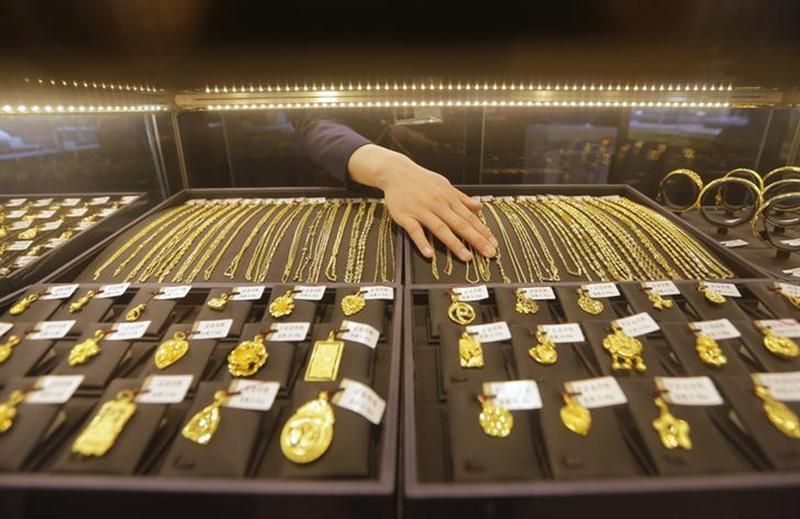Due to the sharp surge in gold prices, the market has experienced a “boom and bust” scenario: gold investment, including gold ETFs, has soared, while consumer demand has weakened, forcing many gold retailers to scale back. Chow Tai Fook, for instance, has closed 905 stores since the start of the year, averaging 2.5 closures per day.
In the first three quarters of 2025, the total trading volume of all gold varieties on the Shanghai Gold Exchange reached 23,800 tons (single-sided), a year-on-year increase of 2.45%, and the total transaction amount was 17.68 trillion yuan (single-sided), a year-on-year increase of 41.55%. Meanwhile, the total trading volume of all gold futures and options on the Shanghai Futures Exchange reached 103,600 tons (single-sided), a year-on-year increase of 59.98%, and the total transaction amount was 61.08 trillion yuan (single-sided), an increase of 112.6%.
At the same time, the sharp rise in gold prices has curbed consumption. In the first three quarters of 2025, China’s gold consumption totaled 682.73 tons, a decline of 7.95% year-on-year. Gold jewelry accounted for 270.04 tons, falling 32.5%, while gold bars and coins reached 352.12 tons, up 24.55%. Demand for industrial and other uses totaled 60.58 tons, increasing 2.72% compared with the same period last year.
The performance of different types of gold products varies significantly. Lightweight, high-value-added jewelry products still maintain strong market appeal, with good sales performance. Demand for gold bars remains strong, as geopolitical conflicts and economic uncertainty further highlight gold’s role as a safe-haven asset. Rapid development in industries such as electronics and new energy has steadily increased demand for industrial gold.
Gold retail stores are experiencing a situation of “ice and fire.” Recently, Chow Tai Fook’s 2025 annual report showed that its retail outlets in Mainland China grew from 4,452 in 2021 to 7,407 in 2024, but in 2025 it closed a net 905 stores, shrinking to 6,501 stores, averaging 2.5 store closures per day, ending its continuous expansion over previous years. According to the report, the number of stores is even lower than in 2023.
Chow Tai Seng Jewelry’s latest Q3 report shows that as of September 30, 2025, the company had 4,675 stores, a net decrease of 560 stores from the same period last year, with franchise stores down 380, becoming the main contributor to store closures. In Q3 alone, the company closed a net 43 stores, with franchise stores accounting for more than 80%.
The company noted that persistently high international gold prices have significantly dampened retail jewelry consumption, resulting in weak inventory replenishment among franchise partners. Despite the challenging market environment, the company remains confident in its growth prospects, focusing on its annual business plan, prioritizing quality development, and strengthening its market position through a multi-brand strategy.
In addition, Chow Sang Sang Group saw a net decrease of 74 stores of all brands in Mainland China in the first half of 2025, with the main brand “Chow Sang Sang” closing 62 stores. Zhou Liu Fu Jewellery’s 2025 interim report shows the same trend. Compared with the end of 2024, by June 2025, the company’s franchise stores in Mainland China decreased by 280, while self-operated stores increased by 6.
At the end of September, the London spot gold price was $3,825.30 per ounce, up 44.65% from the start of the year. The Au9999 gold closing price on the Shanghai Gold Exchange was 871.86 yuan per gram, up 42% year-to-date.
The sharp rise in gold prices has been driven by central banks in various countries. According to research by Deutsche Bank, as of the end of June 2025, gold accounted for 30% of global central bank reserve assets, up from 24% at the end of June this year. In contrast, the share of the U.S. dollar fell from 43% to 40%.
The increase in gold’s share in reserves is partly due to the continuous rise in gold prices, which passively increases the value of existing reserves, and partly due to active gold accumulation strategies by central banks.
According to the latest report from the World Gold Council, global gold demand rose to 1,313 tons in Q3 of 2025, the highest quarterly level on record. Investment demand remains strong, with gold ETFs, bars and coins, and central bank purchases all growing at rates above their ten-year averages.
Central bank purchases were particularly noteworthy. In Q3, central banks bought 220 tons of gold, up 28% from the previous quarter. Total purchases for the first three quarters reached 634 tons, and the full-year figure is expected to exceed 1,000 tons, extending the strong momentum of annual purchases above 1,000 tons seen from 2022 to 2024.
According to the latest data released by the People’s Bank of China (PBOC), China’s foreign exchange reserves stood at $3.343 trillion at the end of October, up from $3.339 trillion at the end of September. China’s gold reserves at the end of October were 74.09 million ounces (about 2,304.457 tons), an increase of 30,000 ounces (about 0.93 tons) month-on-month, marking the 12th consecutive month of gold accumulation.
The World Gold Council’s survey shows that 95% of surveyed central banks expect to continue increasing gold holdings in the next 12 months, with 43% planning to actively increase their allocation, indicating that gold accumulation is no longer a cyclical choice but a structural direction.
According to major investment banks’ forecasts, by the end of 2025, gold prices are expected to be around $4,200–4,600 per ounce; opinions on the 2026 average and year-end prices vary widely among institutions, with the lowest at about $3,250 (Citibank) and the highest reaching $5,000 (Bank of America, BNP Paribas).
However, all banks indicate that in the medium to long term, gold still has safe-haven and wealth-preservation attributes, but short-term volatility may be significant.

